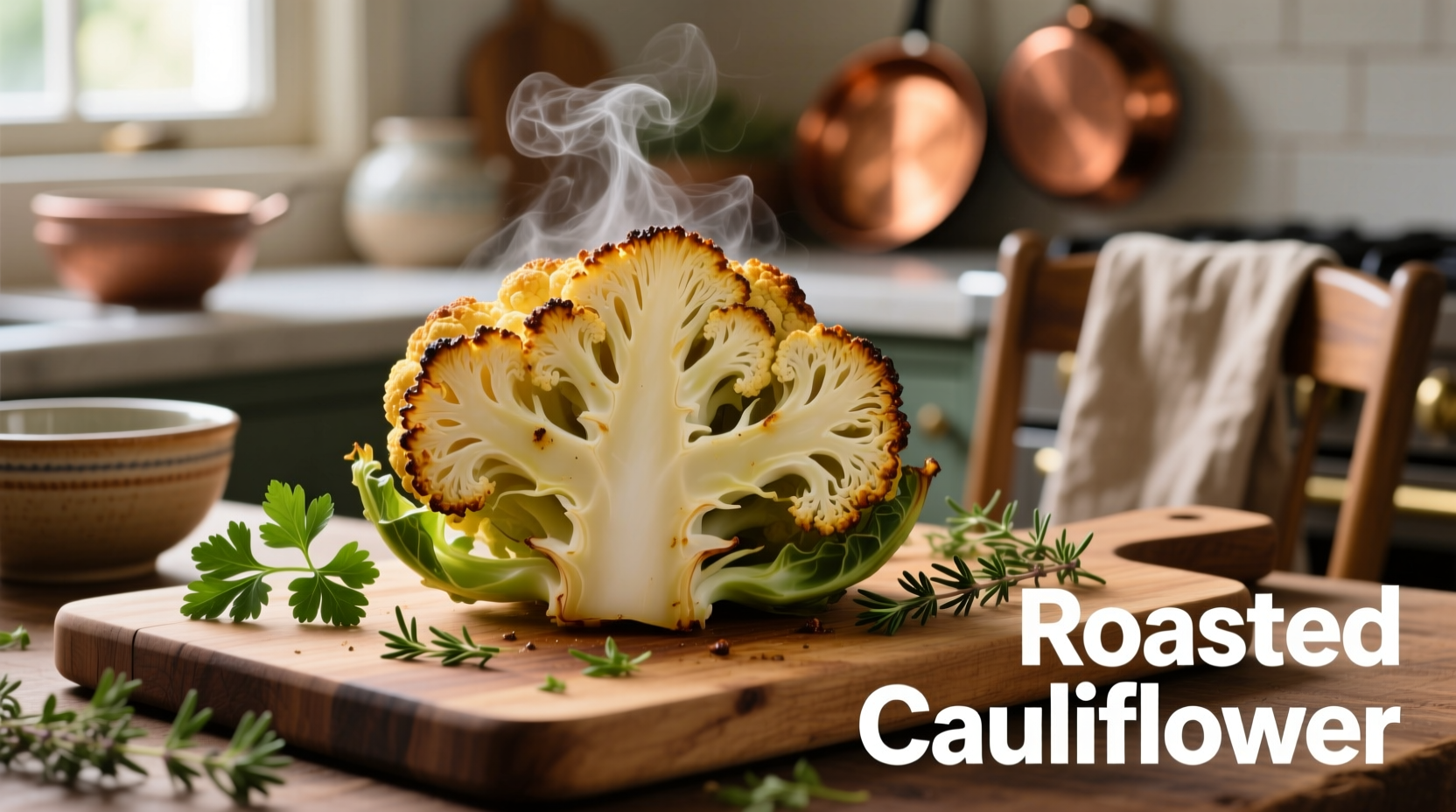Discover exactly how to transform humble cauliflower into a show-stopping dish with these professional techniques. Whether you're meal prepping, seeking healthier vegetable options, or exploring plant-based cooking, this guide delivers foolproof methods that guarantee perfectly cooked cauliflower every time—no more mushy florets or bland results.
Mastering Cauliflower Preparation
Before you start cooking cauliflower, proper preparation makes all the difference. Select a firm head with tight, creamy-white florets and fresh green leaves. Avoid any with brown spots or separation between florets. According to the USDA Food Safety and Inspection Service, always wash produce under running water before preparation, even if you plan to peel it.
For uniform cooking, follow these cutting techniques:
- For roasting or air frying: Cut into 1.5-inch florets with similar size for even cooking
- For steaming: Separate into medium florets (about 2 inches)
- For grilling: Slice 1-inch thick through the core to hold florets together
- For purees: Remove outer leaves and cut around the core

Optimal Cooking Methods Compared
Different cooking techniques yield dramatically different results. This fact comparison table shows exactly when to use each method based on your desired outcome:
| Cooking Method | Time Required | Texture Result | Best For |
|---|---|---|---|
| Roasting (400°F) | 20-25 minutes | Crisp edges, tender center | Flavor development, meal prep |
| Steaming | 5-7 minutes | Firm-tender, moist | Nutrient retention, side dishes |
| Air Frying | 12-15 minutes | Extra crispy exterior | Cauliflower "steaks," snacks |
| Boiling | 8-10 minutes | Soft throughout | Mashed cauliflower, soups |
Professional Roasting Technique
Roasting delivers the most flavorful results through caramelization. Preheat your oven to 400°F (200°C) and line a baking sheet with parchment paper. Toss 1 medium head of cauliflower florets with 1.5 tablespoons olive oil, 3/4 teaspoon salt, and your choice of seasonings. Spread in a single layer with space between florets—crowding causes steaming instead of roasting.
For perfect results, flip halfway through cooking. The cauliflower is done when deeply golden at the edges and tender when pierced with a fork. The Maillard reaction (a chemical process between amino acids and reducing sugars) creates complex flavors that make roasted cauliflower irresistible. According to research published in the Journal of Food Science, roasting at higher temperatures preserves more glucosinolates—beneficial compounds in cruciferous vegetables—compared to boiling.
Steaming for Maximum Nutrition
When preserving nutrients is your priority, steaming emerges as the superior method. Use a stainless steel steamer basket over 1 inch of simmering water, ensuring the water doesn't touch the cauliflower. Cover tightly and cook for 5-7 minutes until tender-crisp.
The key to successful steaming is timing. Over-steaming causes nutrient loss and that unpleasant sulfurous smell. The National Cancer Institute confirms that steaming cruciferous vegetables like cauliflower preserves more of their cancer-fighting compounds compared to other cooking methods. For enhanced flavor, add lemon slices or fresh herbs to the steaming water.
Context-Specific Cooking Recommendations
Understanding when to use each cooking method transforms your results. Consider these context boundaries for optimal outcomes:
- Meal prep Monday: Roast large batches for the week—holds up better than steamed cauliflower in meal prep containers
- Kid-friendly versions: Steam until very tender and mash with butter for picky eaters
- Dietary restrictions: Air fry for oil-free crispiness when following low-fat diets
- Flavor pairing: Roast with Mediterranean spices for Middle Eastern dishes, steam for Asian stir-fries
Flavor Enhancement Secrets
Elevate your cauliflower with these chef-recommended combinations that activate different flavor compounds:
- Acid activation: Toss roasted cauliflower with lemon juice or apple cider vinegar immediately after cooking—the acid brightens flavors and enhances caramelization notes
- Umami boost: Sprinkle with nutritional yeast or a dash of soy sauce before roasting for savory depth
- Texture contrast: Finish with toasted nuts or seeds (pine nuts, almonds, or pumpkin seeds work beautifully)
- Spice timing: Add dried spices before cooking, fresh herbs after for maximum flavor impact
For a restaurant-quality finish, try the professional technique of finishing with a drizzle of high-quality extra virgin olive oil and a sprinkle of flaky sea salt just before serving. This final touch creates flavor layers that make simple cauliflower feel special.
Avoiding Common Cauliflower Mistakes
Even experienced cooks make these preventable errors that compromise results:
- Wet florets: Always dry thoroughly after washing—water prevents proper browning during roasting
- Under-seasoning: Cauliflower needs more salt than you think—season in layers (before, during, and after cooking)
- Overcrowding: Use two baking sheets if needed for roasting—crowding creates steam instead of crisp edges
- Ignoring the core: The stem contains concentrated flavor—dice and roast with florets
Nutritional Powerhouse Profile
Cauliflower delivers impressive nutritional benefits regardless of cooking method. One cup of cooked cauliflower provides:
- 77% of your daily vitamin C needs (USDA National Nutrient Database)
- 20% of daily vitamin K for bone health
- 3 grams of fiber for digestive health
- Only 28 calories per serving
Research from the American Journal of Clinical Nutrition shows that cooking cauliflower actually increases the bioavailability of certain antioxidants compared to eating it raw. The key is using appropriate cooking times—overcooking destroys heat-sensitive nutrients like vitamin C, while proper timing enhances others.
Serving Suggestions for Every Occasion
Transform cooked cauliflower into complete meals with these practical applications:
- As a side: Toss roasted florets with chopped parsley and lemon zest for a vibrant accompaniment to proteins
- As a main: Create cauliflower steaks by slicing thick rounds, roasting, and serving with tahini sauce
- As a base: Use riced cauliflower (pulse steamed florets in food processor) for grain-free bowls
- As comfort food: Make creamy mashed cauliflower by blending steamed florets with roasted garlic and a splash of unsweetened almond milk
For meal prep success, store cooked cauliflower in airtight containers for up to 4 days. Reheat roasted cauliflower in a 350°F oven for 10 minutes to restore crispness—microwaving makes it soggy. Steamed cauliflower works best when incorporated into cold salads or reheated gently in soups.











 浙公网安备
33010002000092号
浙公网安备
33010002000092号 浙B2-20120091-4
浙B2-20120091-4